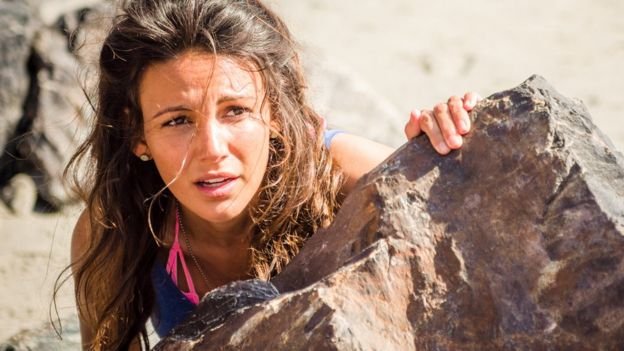
In the week the BBC announced it was casting a woman as Doctor Who for the first time, it also revealed that only a third of its highest-paid stars are women.Headlines about women's equality, or otherwise, in British TV abounded.It got the Reality Check team thinking about whether Jodie Whittaker's appointment as the first female Doctor was a sign of changing times, or is news from the BBC's payroll a more accurate barometer of female fortunes in entertainment? In essence: are more women getting lead roles in TV dramas?According to our research, the answer seems to be: hardly.There is a rise compared with a decade ago - but the increase is marginal. The number of females in lead television roles rose by only one - from 17 in 2006 to 18 in 2016 - although when the number of females enjoying shared lead roles is taken into account, the difference is slightly greater - 26 against 21.Reality Check has looked at the 50 most-watched dramas (excluding soaps) in the UK for 2016, and the corresponding top 50 a decade earlier.To compile each list we've used the official consolidated TV viewing figures collected and published by the Broadcasters' Audience Research Board (BARB).

In 2006, the top 50 most-watched TV dramas included literary adaptations, like Agatha Christie's Miss Marple, starring Geraldine McEwan, and Philip Pullman's The Ruby In The Smoke, featuring Billie Piper in a lead role.There were popular original series, too. Ten years ago crime drama Blue Murder, starring Caroline Quentin as detective and single mother Janine Lewis, was in its third series on ITV. And attracting more than five million viewers was The Kindness of Strangers, a psychological drama with Julie Graham and Hermione Norris.The top 10 for 2006 featured two female-led shows with an audience of more than eight million: Housewife, 49, based on the wartime diaries of Nella Last and starring Victoria Wood, and Helen Mirren's final appearances as Detective Superintendent Jane Tennison in Prime Suspect 7: The Final Act.Prime Suspect, of course, was instrumental in leading the way for strong female leads on TV. Lewis and A Touch of Frost were among the most viewed dramas with a male lead.

On the list in 2016 was the second series of military drama Our Girl, starring Michelle Keegan, as was Dark Angel, a chilling story set in the 19th century starring Joanne Froggatt as prolific serial killer Mary Anne Cotton.In terms of overall popularity, three of the five dramas that proved most popular with audiences in 2016 featured a lead character or characters who were female.Forensic crime drama Silent Witness, starring Emilia Fox, was in its 19th series and still attracting audiences in excess of eight million.Happy Valley, for which Sarah Lancashire won a Best Actress TV Bafta, was in its second run, and there was Call The Midwife, with its female ensemble cast.Popular shows with a male lead included Benedict Cumberbatch's Sherlock and Death In Paradise, starring Kris Marshall.Some caveats - streaming services like Netflix and Amazon Prime don't release their viewing figures. That means that undoubtedly popular shows with strong female leads, like The Crown, Orange Is the New Black and The Gilmore Girls revival, could not be included on the 2016 top-50 list.And of course major streaming services did not exist back in 2006.So in conclusion, the number of female-led dramas - and the ones in which women share the lead - have slightly increased, along with their popularity with audiences.But there's a long way to go before parity is achieved.
Hi! I am a robot. I just upvoted you! I found similar content that readers might be interested in:
http://www.bbc.co.uk/news/entertainment-arts-40668409
I love Angelina Jolie.